Archive for the ‘Navy’ Category
TacJobs – Navy Information Warfare
Sunday, October 27th, 2019SCUBAPRO Sunday – US Navy Birthday
Sunday, October 13th, 2019
On 13, OCTOBER 1775 the Second Continental Congress passed a resolution creating official establishment the Continental Navy. They voted to outfit two sailing vessels, armed with ten carriage guns, as well as swivel guns, and manned by crews of eighty, and to send them out on a cruise for three months to intercept transports carrying munitions and stores meant for the British army in America. Throughout the War of Independence, the Continental Navy sent to sea more than fifty armed vessels. The Navy’s squadrons and cruisers seized enemy supplies and carried correspondence and diplomats to Europe, returning with needed munitions. They took nearly 200 British vessels as prizes, and some of the British Isles themselves, contributing to the demoralization of the enemy and forcing the British to divert warships to protect convoys and thier trade routes. But with the end of the American Revolutionary War, the Continental Navy was disbanded. Then with threats to American merchant shipping by Barbary pirates from four North African States, in the Mediterranean, President George Washington signed the Naval Act of 1794 the act authorizing the construction of the Navy’sNavy’s first six frigates ? Congress passed a resolution to establish a national navy that could protect U.S. commercial vessels from attacks by Barbary pirates in the Mediterranean and nearby Atlantic waters.
NSWC Crane Hosts First United Kingdom Light Weapon Design Course for Expeditionary Professionals
Tuesday, July 30th, 2019CRANE, Ind. – Naval Surface Warfare Center, Crane Division (NSWC Crane) hosted Expeditionary professionals for its first Light Weapon Design Course led by Cranfield University, a postgraduate university based in the United Kingdom that specializes in defense technology.

“This is the first time the Light Weapon Design has been brought to Crane,” says Adam Parsley, a Division Manager at NSWC Crane. “The Small Arms Weapon Systems Division was able to really enhance the learning experience for all the students with the access we have to weapons, ammunition, and the firing range.”
Parsley says the Light Weapon Design Course teaches the fundamentals of weapon operation and design.
“It focuses on the development of light weapons, or small arms, and their design and operation today,” says Parsley. “Through this course, our Expeditionary employees will better understand the reasoning behind design parameters – heat dissipation, durability, signature, recoil – and will have better concepts of how to design and test weapons.”
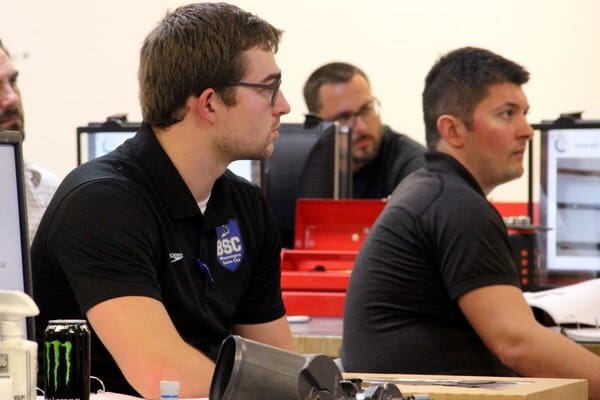
Chris Shaffer, an engineer at NSWC Crane, took part in Cranfield’s Light Weapon Design Course. Shaffer says these highly specialized courses from Cranfield help with workforce development.
“These courses offer Expeditionary professionals the opportunity to gain unique, hands-on experience,” says Shaffer. “They can take the engineering concepts, ideas, and skills they learned in undergrad and apply them to military devices. For these jobs in Expeditionary Warfare, the workforce needs specialized knowledge.”
Students from other commands traveled to NSWC Crane to participate in the course.
“The Light Weapon Design Course was fantastic,” says Erin Thompson, a Weapons Team Engineer at Marine Corps Systems Command. “I learned so much that will be directly applicable to my job and make me more effective for the Marine Corps. Chris Shaffer and the Crane team were great and the access we were afforded to the weapons was incredibly beneficial.”
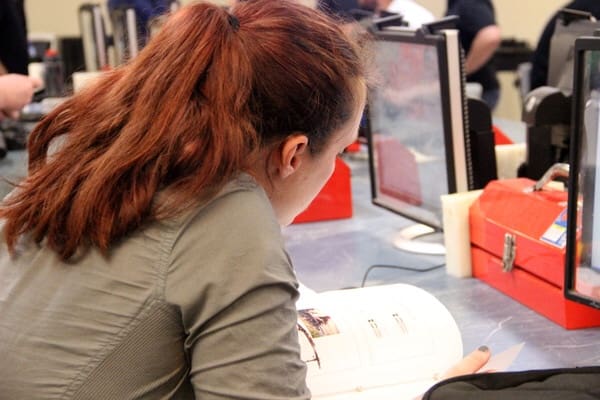
“I thought the class was really well done,” says Elizabeth Palm, a Test Officer at US Army Cold Regions Test Center. “Adam and Chris did a great job coordinating with Cranfield to be able to offer so much hands-on time with a variety of weapons, especially the foreign ones. And of course any chance to get out on the range is always a good day!”
Cranfield University is in its second year of offering Masters of Science courses at Crane. The Light Weapon Design Course is the seventh Cranfield course since its inception.
“Cranfield offers courses in weaponry, munitions, sensors, and communications that most colleges and universities just don’t have,” says Parsley. “They also have packaged these courses in this condensed, one-week format that is optimal for the working professional who wants to pursue an advanced degree.”
NSWC Crane is a naval laboratory and a field activity of Naval Sea Systems Command (NAVSEA) with mission areas in Expeditionary Warfare, Strategic Missions and Electronic Warfare. The warfare center is responsible for multi-domain, multi- spectral, full life cycle support of technologies and systems enhancing capability to today’s Warfighter.
By NSWC Crane Corporate Communications
Canadian Navy – Naval Enhanced Combat Uniform Update
Monday, June 3rd, 2019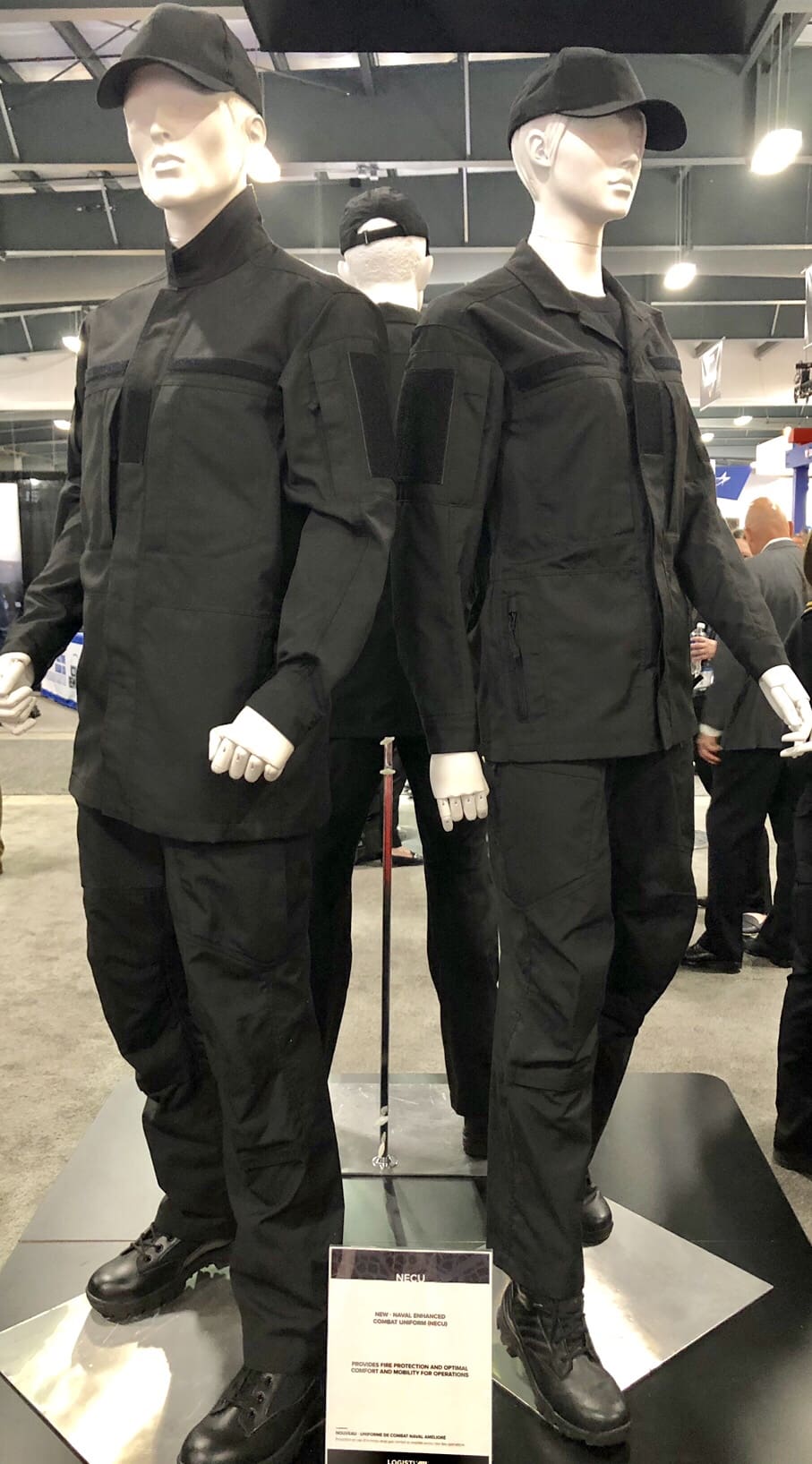
The latest version of the Canadian Navy’s Naval Enhanced Combat Uniform goes on trial soon with a Operational Wear test aboard a vessel. The earliest version was quite baggy, based on the Canadian Forces Combat Uniform, but in Black. It proved to be too baggy for use aboard ship. Logistik Unicorp produced the test uniforms and created a more streamlined fit as well as integrating features, like pocket designs, from a proposed next generation combat uniform.
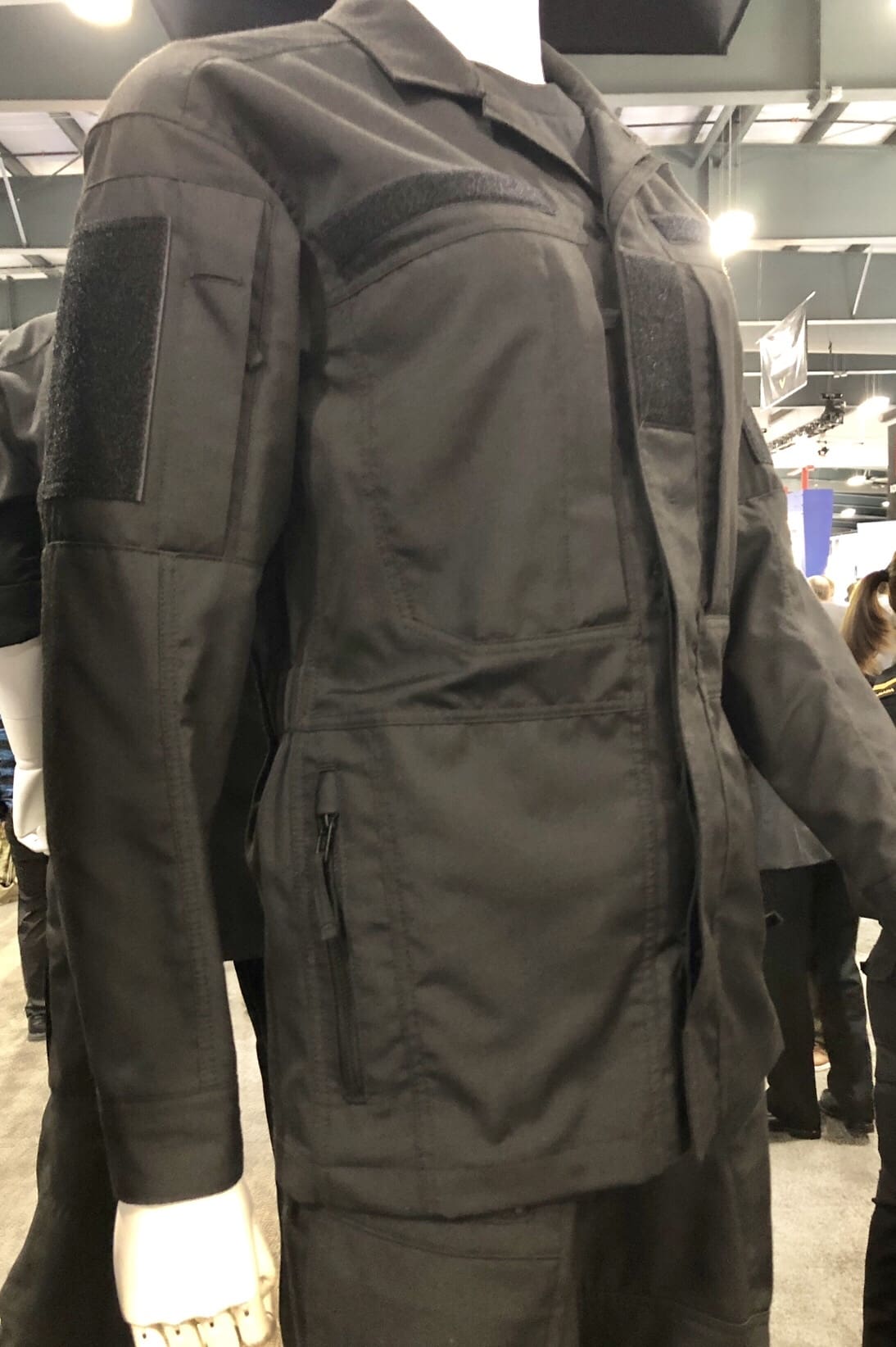
The Naval Enhanced Combat Uniform is the replacement for the current No 5 Naval Combat Dress. Like its predecessor, it is black in color. However, two fabrics are currently being looked at, Nomex and Kermel, both competing pyramid fabrics with FR properties.
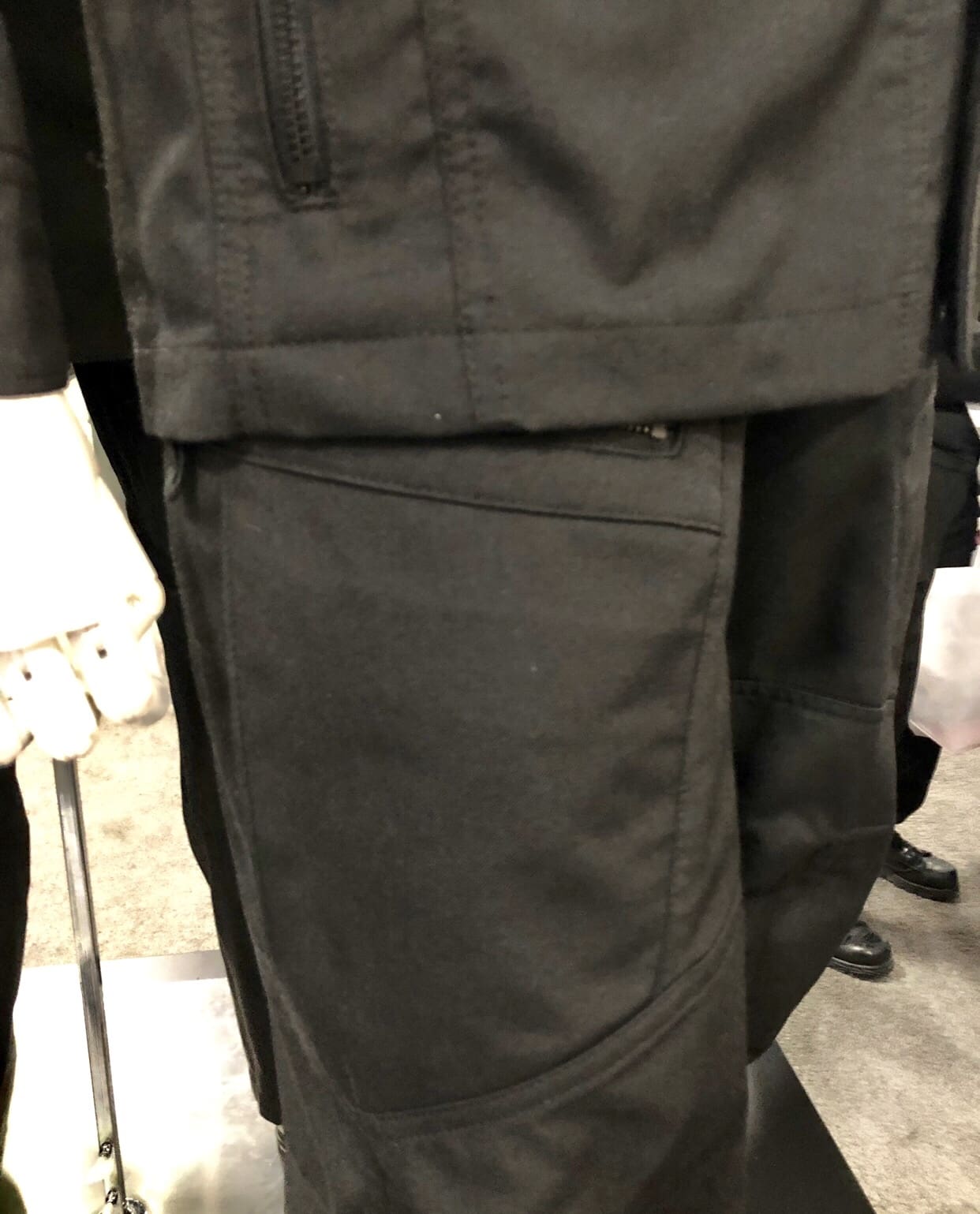
The shirt features onboard facing zippered Napoleon pockets as well as zippered hand pockets at the waist.
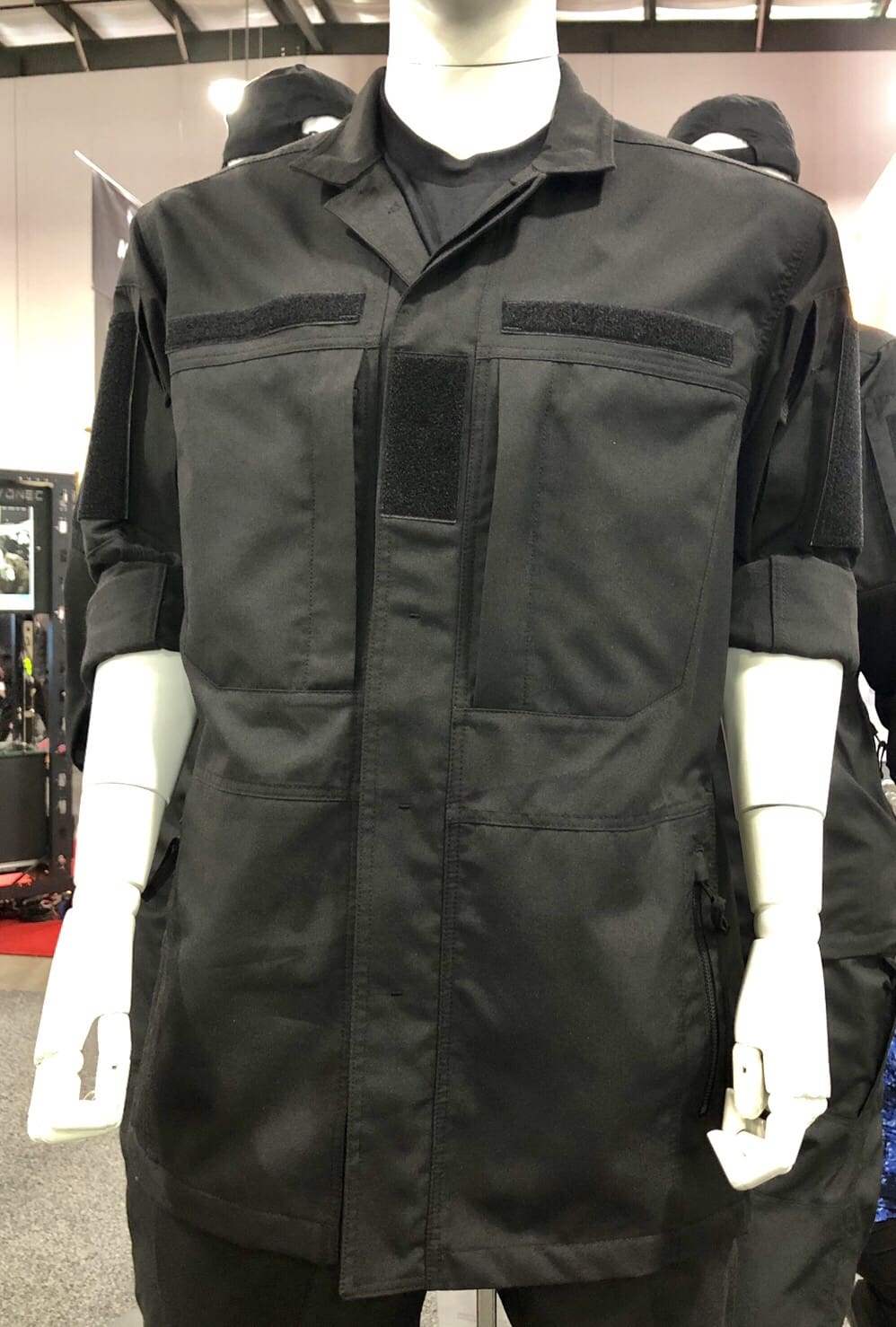
Additionally, there are zippered bicep pockets on either arm as well as a pile field for insignia.
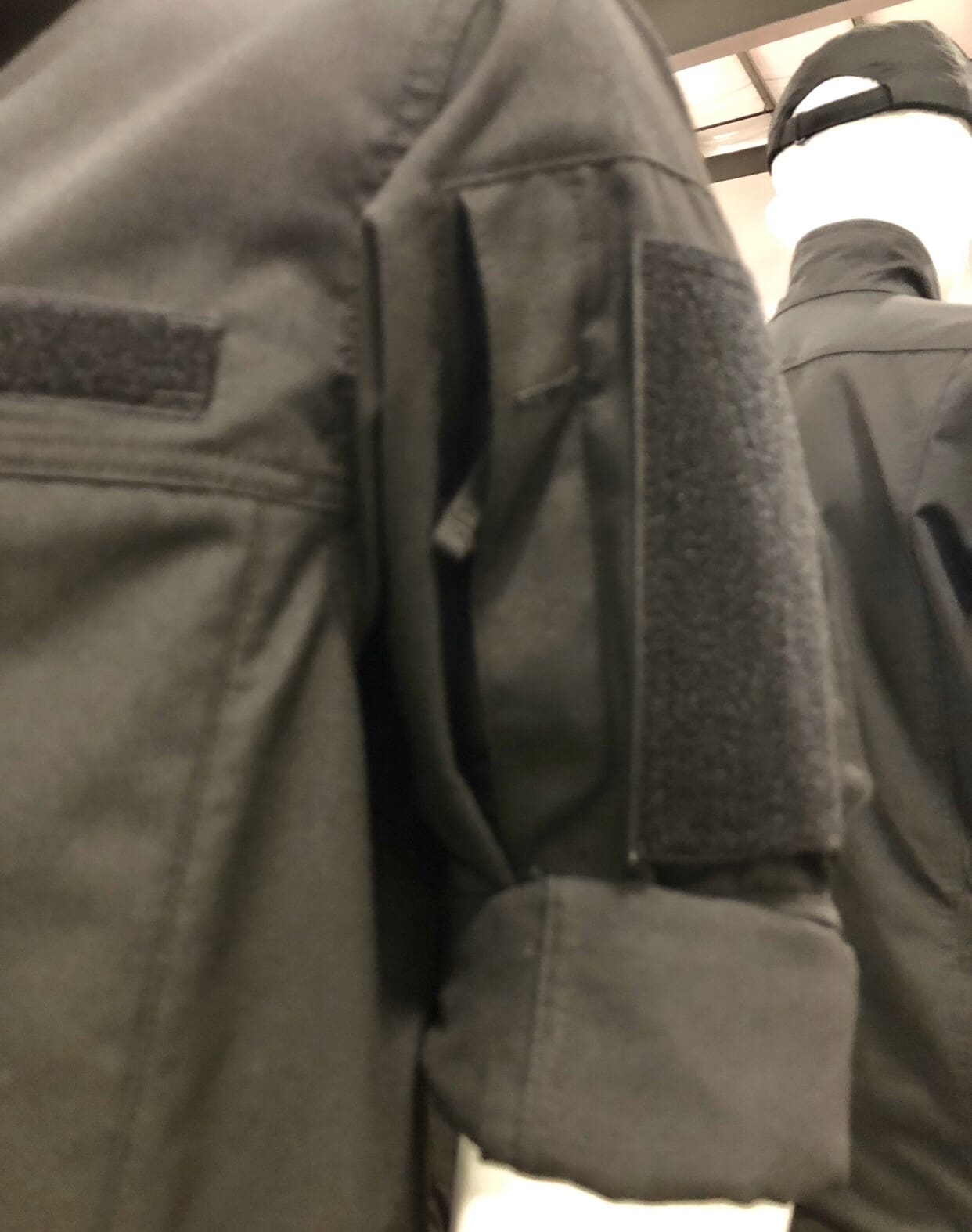
One interesting feature is the integrated knee padding. It’s fairly simple and straightforward, but there are accommodations to add additional padding if needed.
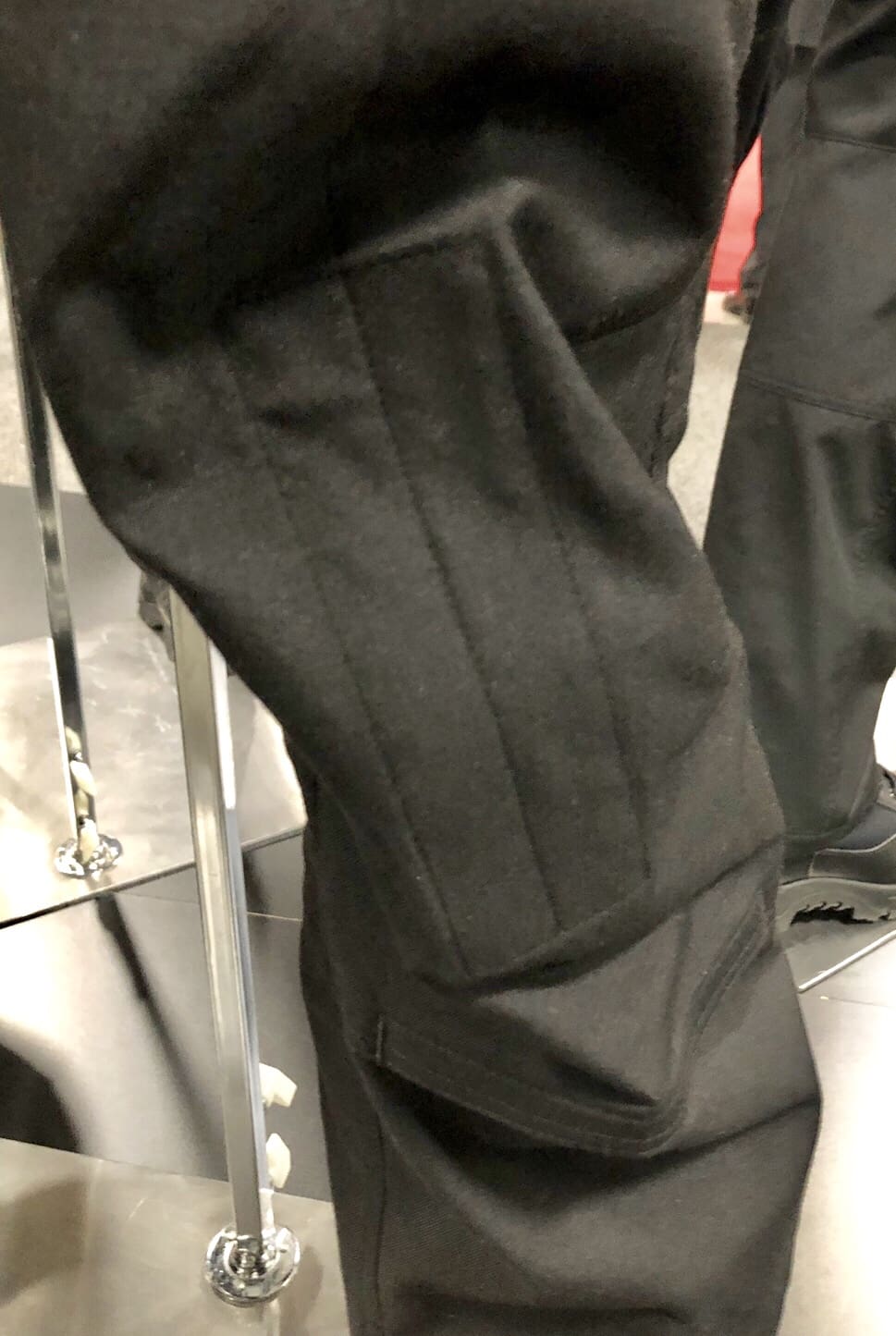
In addition to fabric selection, they also hope to determine whether the trouser will feature a zippered rear pocket.
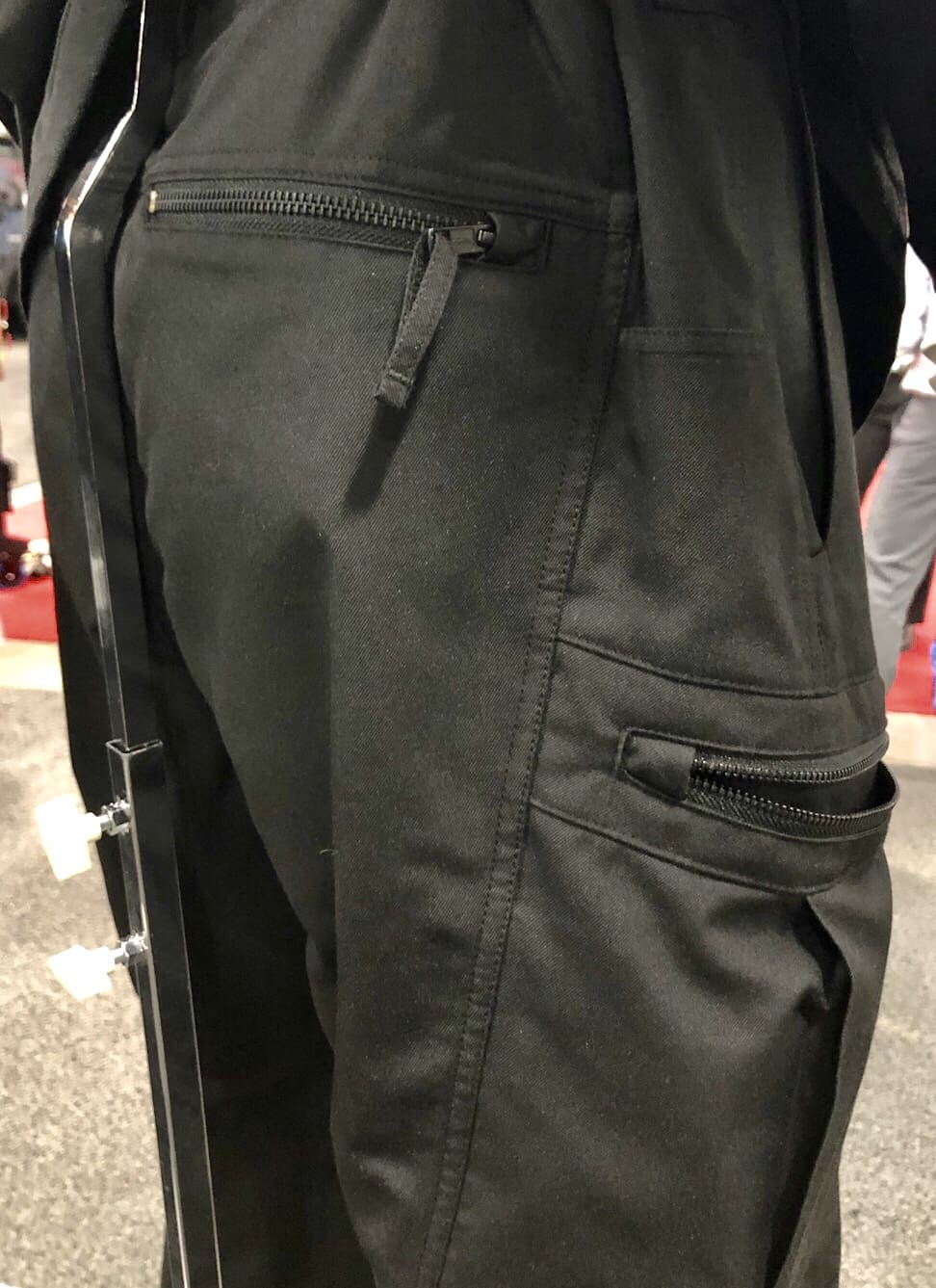
If all goes well, a final version will soon become the new No 5 dress for Canadian Navy personnel. Perhaps, some of the features of this uniform will find also their way into the combat uniform worn by ground-based Canadian forces.
Navy Introduces New Uniforms for Brig Inmates
Tuesday, April 30th, 2019MILLINGTON, Tenn. (NNS) — To enhance security and provide for public safety, all pretrial and post-trial prisoners confined in Navy shore military correctional facilities (MCFs) will begin wearing a Navy non-military standardized prisoner uniform (SPU) May 1.
Wearing of the SPU will be mandatory for all prisoners, regardless of Service affiliation.
Currently, all prisoners confined in Navy shore MCFs wear their respective Service utility uniform. The “military model” approach adheres to a Navy philosophy, that the approach curbs abusiveness, maintains structure and discipline with core military values to influence positive behavior in an effort to support the prisoners’ rehabilitation.
“However, having prisoners wear their Service uniform creates security and public safety challenges, such as difficulty in distinguishing staff from prisoners,” said Jonathan Godwin, senior corrections program specialist with the Corrections and Programs Office, Navy Personnel Command.
“Prison populations are largely comprised of prisoners incarcerated for crimes against people, which is reflected in courts-martial judgments with longer sentences and more less-than-honorable discharges from service,” Godwin added. “Additionally, punishments consist of total forfeiture of all pay and allowance, and it is rare for a prisoner to return to active duty.”
Pairing these challenges with a prisoner population almost exclusively in a non-pay status and not returning to duty, the costs associated with buying and maintaining Service uniforms becomes a tremendous and unnecessary fiscal burden to the Navy and the taxpayer. The price for a Service-specific military utility uniform with one pair of trousers and a top is approximately $95. When you add in a fleece jacket, the total easily exceeds $150.
The new SPU top and trousers will cost approximately $18.50. Adding a belt, buckle, ball cap and watch cap, and the price is about $22. Then add a jacket and the complete price to clothe a prisoner will be about $45.
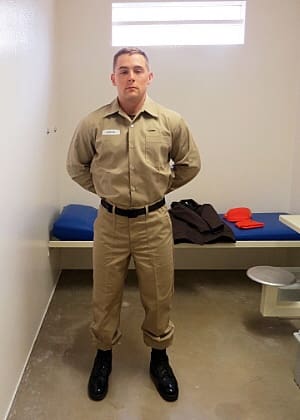
There will be two, distinct in color, uniforms worn by prisoners with the prisoner’s legal status determining which will be worn. The pretrial prisoner uniform will be chocolate brown in color and post-trial prisoner uniform will be a tan-colored uniform.
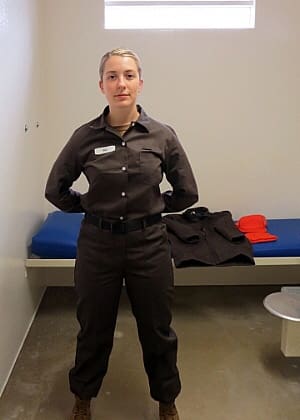
The SPU consists of MCF issued shirt/blouse, pants, web belt with open-faced buckle, and Service-issued undergarments, service-issue socks and boots or facility approved footgear. Additional SPU accessory items consist of a prisoner jacket and a baseball cap and/or beanie/watch cap.
“In addition to the enhancement of correctional security, improved public safety and significant fiscal savings, the wearing of the new SPU will produce numerous benefits across a wide range of Navy corrections operations,” Godwin said. “These include an SPU with a neat and professional look, an easier-to-maintain and care-for uniform, and less wear and tear on equipment, i.e. washing machines and dryers, and less cleaning supplies, i.e. laundry detergent.”
The SPU will be provided and funded by the Navy MCF. During in-processing into a Navy MCF, prisoners will sign for the uniforms and they will be held responsible for care and maintenance. Upon release from confinement, the prisoner will return the issued SPUs back to the MCF.
Also beginning May 1, clothing and packing list for prisoners entering confinement will no longer require four sets of utility uniforms and jackets. However, prisoners in pretrial-status will require their service dress uniform for court appearances.
Commands placing a service member into a Navy MCF for confinement are encouraged to review the required confinement documents and clothing packing lists, which can be found at www.public.navy.mil/bupers-npc/support/correctionprograms/brigs.
From Navy Personnel Command Public Affairs
SCUBAPRO Sunday – Happy Birthday Department of the Navy
Sunday, April 28th, 2019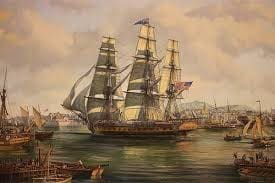
On 30 April,1798 Congress establishes the Department of the Navy as a separate cabinet department. Previously, naval matters were under the cognizance of the War Department. (I like the name War Department better then Department of Defense) Benjamin Stoddert is named as the first Secretary of the Navy.
United States Navy claims 13 October 1775 as the date of its official establishment, when the Second Continental Congress passed a resolution creating the Continental Navy. But with the end of the American Revolutionary War, the Continental Navy was disbanded. Then with threats to American merchant shipping by Barbary pirates from four North African States, in the Mediterranean, President George Washington signed the Naval Act of 1794 the act authorizing the construction of the Navy’s first six frigates ? Congress passed a resolution to establish with haste a national navy that could protect U.S. commercial vessels from attacks by Barbary pirates in the Mediterranean and nearby Atlantic waters. The Algerian and Tunisian pirates joined forces, and by 1650 more than 30,000 of their captives were imprisoned in Algiers alone. Piracy was the cause of several wars between Tripolitania and the United States in the 19th century.
NAVAIR Approves Massif’s Hellman Combat Pant and Advanced Quarter Zip Combat Shirt
Tuesday, April 16th, 2019Massif’s Hellman Combat Pant and Advanced Quarter Zip Combat Shirt are NAVAIR approved. As a recent SOA list addition, these new items are interchangeable with the approved Massif 2 Piece flight suit to give Aircrews the flexibility to pick and choose flight gear based on mission and environment. This is huge for Naval Aircrews as this is the first time a Combat-Style pant with integrated knee pad has been approved for flight use. Navy and Marine Corps helo crews spend lots of time on their knees and this move is bringing much needed relief.
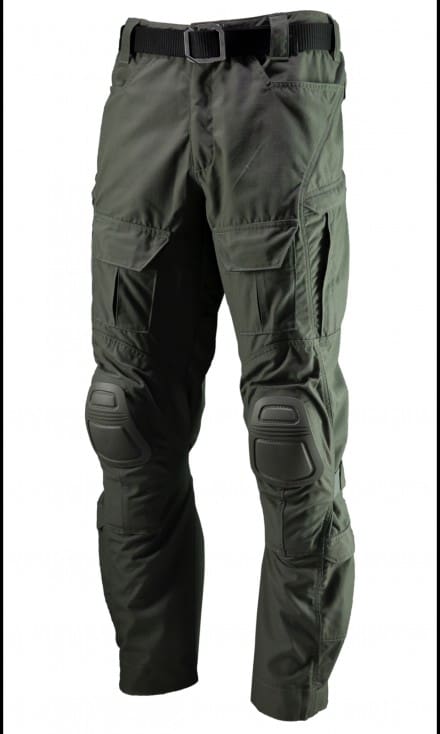
Massif has done a great job of working with various communities like naval and Marine Corps aviation to not only boost performance, but also preventing injuries.
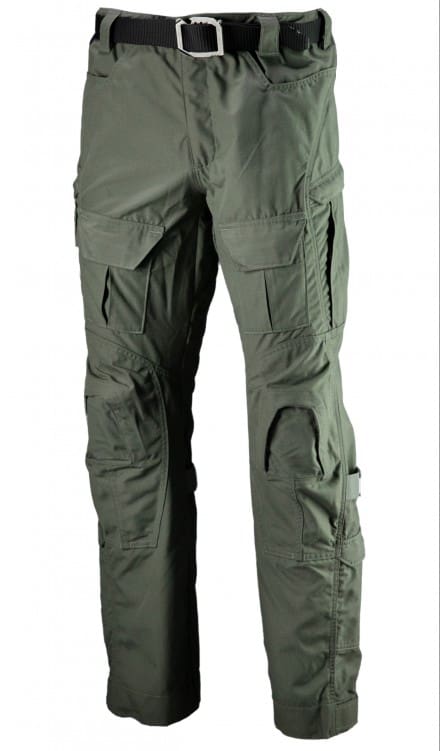
* Sigma 4 Start Fabric powered by DuPont Nomex and DuPont Kevlar
* Integrated/removable Crye Precision Airflex Kneepad
* Intuitive Hand Pockets and utility pockets built with comfort and usability in mind
* Dual entry cargo pockets
* Available in Sage Green, Tan, and OCP
Tech sheet and sizing chart can be found at www.massif.com/profession/navy/hellman-pant.
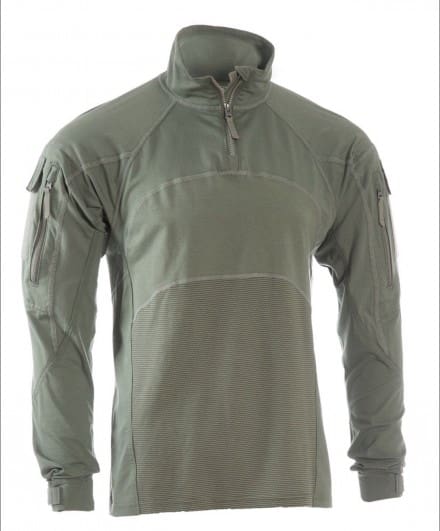
* Proprietary 4 way stretch fabrics now fielded in over 7 million combat shirts
* Superfabric covered elbows offer protection and abrasion resistance
* Ultra lightweight collar and zipper
* Adjustable cuffs and thumb loop for secure fit
* Advanced breathability and wicking properties
* Available in Sage Green, Tan, OD Green, Black and OCP
* Women’s fit available in Sage Green and OCP
Tech sheet and sizing chart can be found at www.massif.com/profession/navy/advanced-14-zip-combat-shirt.
Strategie & Technik – German Navy Awards Boarding Specialist Qualification Badge
Sunday, March 31st, 2019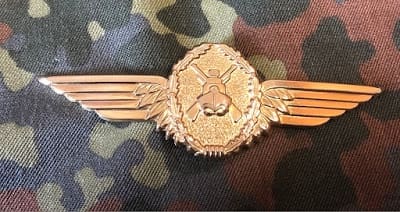
According to our friends at the German language blog, “Strategie & Technik” the Seebataillon der Deutschen Marine has awarded the Boarding Specialist (Bordeinsatzsoldat) Qualification Badge for the first time since its creation in 2015. It is meant to designate fully qualified boarding team leaders.
Read the full details here.
















































































































